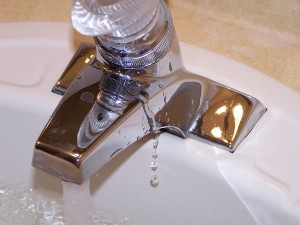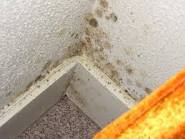And Now It’s Time to Play… … Where’s…That…Leak?
January 14, 2015
Filed under Blog
Brought to you by the good folks at Wood Rot, Mold and Wasted Water.
But seriously, leaks inside the home are at least annoying, and at most can be hazardous to your home and your health. So today we’re playing the game “Where’s That Leak” to help you discover how to find those drips, along with some information about why it’s so important. Along the way are some tips for fixing leaks, some resources where you can get additional information – and where you can get help!
And now it’s time for our first question.

A drippy faucet is caused by:
a) Faulty water pressure
b) Loose gaskets in the faucet
c) Failing washers in the handle
The correct answer is C. Most drips are due to old, failing washers in the handle assembly. If you’re feeling handy, the parts are quite inexpensive but the process requires some skill and a few precautions. Be sur
Once you’ve gathered what you need, turn off the water under the sink. If there is any water coming out of the faucet after you’ve turned the water off under the sink, you also have a leak at the valve and this will need to be replaced. You’ll need to further research how to make this repair as it will require shutting the main water off and different repair supplies. Sounds complicated doesn’t it? Stay with us until the end of the game for a practical solution.e that you have all of the tools you need before you start. Also make sure you completely understand the repair you’re attempting. You can search the internet for “how to” videos or instructions.
But now, on to Question Number 2
On average, how much water can a single leaky faucet waste?
a) About one gallon a week
b) About one gallon day
c) About one gallon a month
 The correct answer is B. The USGS website estimates that with just one drippy faucet dripping 10 times per minute, you would waste 347 gallons of water a year! And of course, if you have more than one drippy faucet, well that can be a lot of water. If you have leaky faucets and want to find how much water you might be wasting, you can go to the USGS website and use their handy estimator by clicking here.
The correct answer is B. The USGS website estimates that with just one drippy faucet dripping 10 times per minute, you would waste 347 gallons of water a year! And of course, if you have more than one drippy faucet, well that can be a lot of water. If you have leaky faucets and want to find how much water you might be wasting, you can go to the USGS website and use their handy estimator by clicking here.
Question Number 3
The area under your sink should be:
a) For storing every imaginable cleanser and gadget for your bathroom or kitchen
b) Used for storage, but kept well organized
c) Kept as clear as possible
The answer is C. When you use the area under your sink to store some or all of your supplies it becomes very difficult to determine if this area is damp. Dampness leads to all kinds of potential problems. Termites love damp dark places. Constant moisture can lead to rot, mold or even destroy the bottoms of any cans or canisters stored under the sink.
If that’s not enough to scare an ordinary person, think of all of the electrical connections that are under a typical kitchen sink – for the dishwasher, the garbage disposal etc. As you’re probably aware, water and electricity do not play nice together. Hiring a professional who understands both plumbing and the electrical aspect of repair would be a wise and safe choice should you discover a leak under the kitchen sink.
Mold is a health hazard which is encouraged to grow by:
a) Leaky plumbing
b) Improper ventilation of your bathroom
c) A leak in your roof or windows
d) All of the above
The correct answer is D. Mold affects indoor air quality. In 2004 the Institute of Medicine determined that there was sufficient evidence to link indoor exposure to mold to asthmatic symptoms, coughing, and wheezing in otherwise healthy people there was suggestive evidence linking indoor mold exposure to respiratory illness in otherwise healthy children. If that’s not enough to inspire you so stamp out the damp, the Institute of Medicine also found sufficient evidence to link just being exposed to damp indoor environments with the same or similar symptoms in adults and children. For more information about damp environments, mold and possible health effects you can visit their website by clicking here.
And now for our final Bonus Question:
When you discover that plumbing and/or electrical repairs need to be made at your home your best choice is: a) Do an internet search for “how to,” run to the hardware store for supplies, and “wing it.”
a) Do an internet search for “how to,” run to the hardware store for supplies, and “wing it.”
b) Call your brother “Bob” to come help you, because he fixed a sink once.
c) Hire someone who does this sort of thing for a living.
And the correct answer is C! The Fix-It Professionals are your best choice for tricky plumbing and electrical repairs.
How many answers did you get right? No matter what your score, you’re a winner, Congratulations! As your “play along at home prize” The Fix-It Professionals have a January Special just right for your needs! Read on to learn more.

